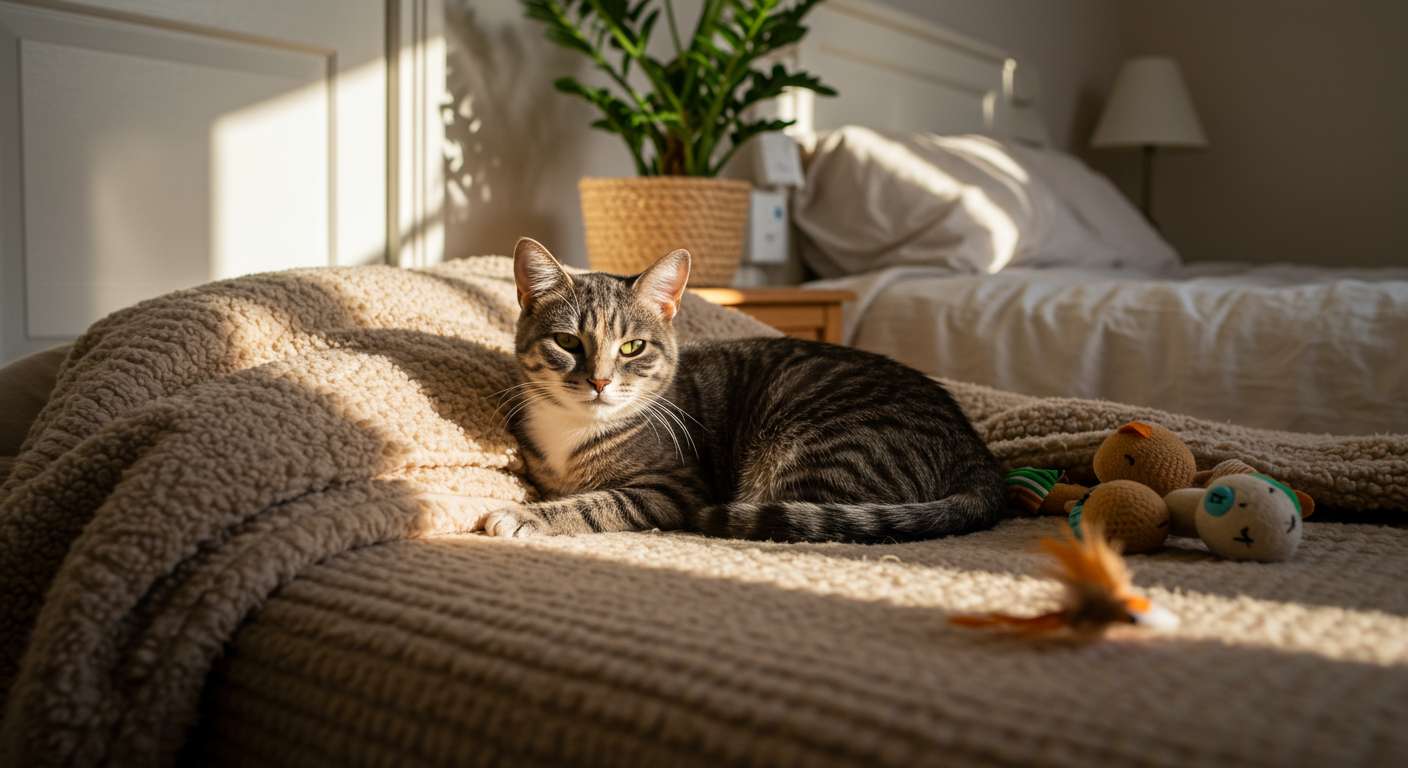As experienced pet parents, you understand the deep bond you share with your animal companions and the importance of their well-being. Recognizing and addressing anxiety in pets is a crucial step in ensuring their happiness and a harmonious home environment. This guide provides advanced insights and practical strategies for managing and alleviating pet anxiety using natural remedies and behavioral techniques.

Deep Dive into Pet Anxiety for Experienced Pet Parents
Anxiety in pets can manifest in various ways, from subtle changes in behavior to more overt signs of distress. Understanding the root causes of your pet's anxiety, whether it stems from separation, loud noises, or other environmental stressors, is the first step towards effective management. Common signs include excessive panting, pacing, destructive behavior, changes in appetite, and hiding.
Advanced Strategies and Insights
Environmental Enrichment
Creating a stimulating and safe environment is essential for anxious pets. This includes:
- Safe Spaces: Designate a quiet, comfortable area, such as a crate or bed, where your pet can retreat when feeling overwhelmed.
- Interactive Toys: Provide puzzle toys and other engaging activities to keep your pet mentally stimulated and reduce boredom-related anxiety.
- Consistent Routine: Establish a predictable daily schedule for feeding, walks, and playtime to provide a sense of security.
Dietary and Nutritional Support
Diet plays a significant role in overall pet health and can influence anxiety levels.
- Balanced Diet: Ensure your pet receives a high-quality diet appropriate for their age, breed, and activity level.
- Calming Supplements: Consider supplements like L-theanine or chamomile, but always consult with your veterinarian before introducing anything new.
Behavior Modification Techniques
- Desensitization and Counterconditioning: Gradually expose your pet to anxiety-inducing stimuli while associating them with positive experiences, such as treats or praise.
- Positive Reinforcement: Reward calm behaviors to reinforce a relaxed state.
- Professional Help: Seek guidance from a certified professional dog trainer (CPDT) or veterinary behaviorist for tailored strategies.
Case Study: Achieving Calm with a Fearful Dog
Meet Max, a five-year-old Labrador who suffered from severe separation anxiety and fear of thunderstorms. His owner, after consulting with a veterinary behaviorist, implemented a comprehensive plan. This included using an Adaptil Diffuser, providing a safe space in a crate, and engaging in daily desensitization exercises using recordings of thunder. Over several months, Max's anxiety decreased significantly, allowing him to enjoy a more relaxed and confident life.
Navigating Complex Pet Challenges
Dealing with pet anxiety can be complex, but with patience and the right approach, you can make a significant difference.
Medications
- Consult your vet: If natural methods aren’t effective, discuss medication options with your veterinarian, who can prescribe anti-anxiety medications if needed.
Gradual Introductions
- Introduce new situations and people to your pet slowly and with positive reinforcement.
Monitoring and Adjustments
- Keep a journal to track your pet’s behavior and the effectiveness of implemented strategies. Be prepared to adjust your approach as needed.
Integrating Advanced Care Practices
Aromatherapy
- Use pet-safe essential oils, like lavender or chamomile, in a diffuser or diluted spray to create a calming atmosphere.
Massage and Touch
- Gentle massage and touch can help release tension and promote relaxation. Pay attention to your pet's body language and adjust accordingly.
Long-Term Wellness & Longevity Tips
- Regular Veterinary Checkups: Routine checkups are essential to rule out any underlying medical conditions contributing to anxiety.
- Consistent Training: Continue reinforcing desired behaviors and maintaining a consistent routine.
- Enrichment Activities: Keep your pet mentally and physically stimulated with varied activities, such as walks, playdates, and training sessions.
Expert-Level Pet Care Insights
Managing pet anxiety is an ongoing process. By combining environmental modifications, nutritional support, behavioral techniques, and, when necessary, medication, you can significantly improve your pet's quality of life. Remember to consult with professionals, stay patient, and always prioritize your pet's well-being.